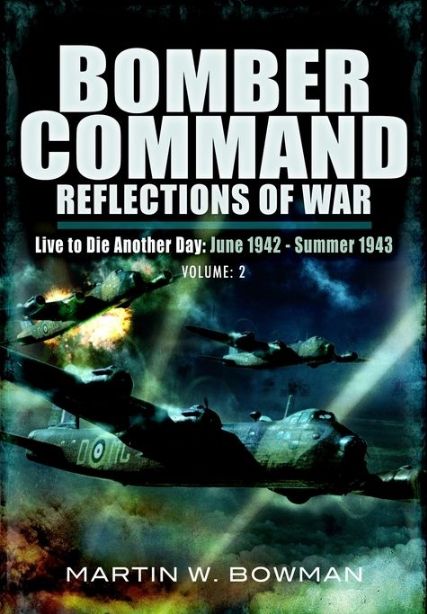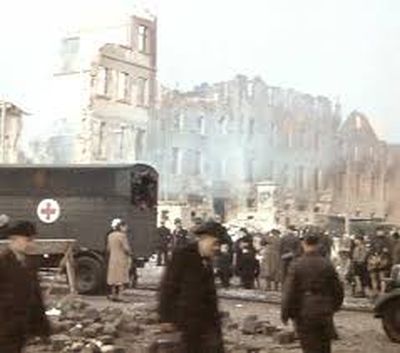| Title: | Bomber Command Reflections of War, Volume 2 |
| Author: | Martin Bowman |
| Publisher: | Pen & Sword Books |
| Released: | 2012 |
| ISBN: | 9781848844933 |
| Pages: | 241 |
| Review: |
Sergeant Arthur Johnson was only recently classified with the British 142 Squadron when he flew a mission to Frankfurt in the night of 24 to August 25, 1942. The nineteen year old tail gunner would never forget what he saw that night. "I watched another Wellington. I witnessed a huge explosion. Balls of fire, fragments and coloured lights were falling all over the sky behind me. I looked again for the Wimpy but it was gone." The following night, another crew of the 142 Squadron barely managed to reach England. Sergeant Norman Childs remembers: "Our aircraft looked a mess. Full of holes and big chunks off. The next day we discovered, to our horror, that of the six aircraft from 'B' Flight, our crew were the only survivors." Those are just two random quotes, but they show that such experiences were common for the young crews of RAF Bomber Command. Seventy years later, it is difficult for us to make a good representation. Therefore Martin Bowman bundled as many of these stories in his five-part series "Bomber Command reflections of war", of which this is the second part. Martin Bowman is one of the most leading British aviation historians. With his own past in the Royal Air Force, he began over twenty years ago to delve into the history of military aviation. He now has written dozens of books about the British, the American and the German Air Force. This is the second book in a series of eventually five parts, in which he brings together experiences of the flightcrews of Bomber Command, and at the same time places them in perspective of the different stages of the war. Part one describes the period from the beginning of the Second World War until May 1942. This new book has its starting point in the summer of 1942, the start of the period during which the Bomber Command went through a major of transformations. The first stage of the war had exposed the shortcomings of the bombers and therefore various changes were made. New air planes like the Lancaster and the Halifax began to form the backbone of the fleet and new means and methods of navigation like H2S and Oboe had to improve the results. Despite that, losses remained very high, although this had no major impact on the morale. Bowman shows, based on the records and memories of veterans that most young men had the unshakable belief that they would survive, despite the large losses. Although anxiety certainly consisted among these volunteers , new recruits continued to register themselves in large numbers throughout the entire war. The large amount, often exciting, records of veterans create a story that is often experienced in the minds of the crew themselves. However, it is an art to combine these stories and to add enough background information that gives a clear description of the big picture. Bowman also succeeds in this part to concisely describe the various campaigns in the air war. Amongst others this book covers the bombing raids of more than a 1,000 aircraft shortly after the appointment of Air Marshal Sir Arthur Harris, the attacks on targets in Italy, and the set up of the Pathfinder Force and the operations to the Ruhrgebiet. This again without participating in the debate about civilian casualties where these attacks were associated with. Like the first part of the series, this book from Bowman aims to give the reader an insight of the experiences from the flight crews and the circumstances in which they carried out their task. It is a book that distinguishes itself by keeping distance from the debate about the civilian casualties during bombings in World War II but rather emphasizes the bravery of the young men who, without having had any involvement in the planned tactics, performed an extremely dangerous task. It is therefor an excellent second part in a promising five-volume sequence. |
| Rating: |
|
Information
- Translated by:
- Peter ter Haar
- Article by:
- Pieter Schlebaum
- Published on:
- 30-03-2014
- Feedback?
- Send it!





